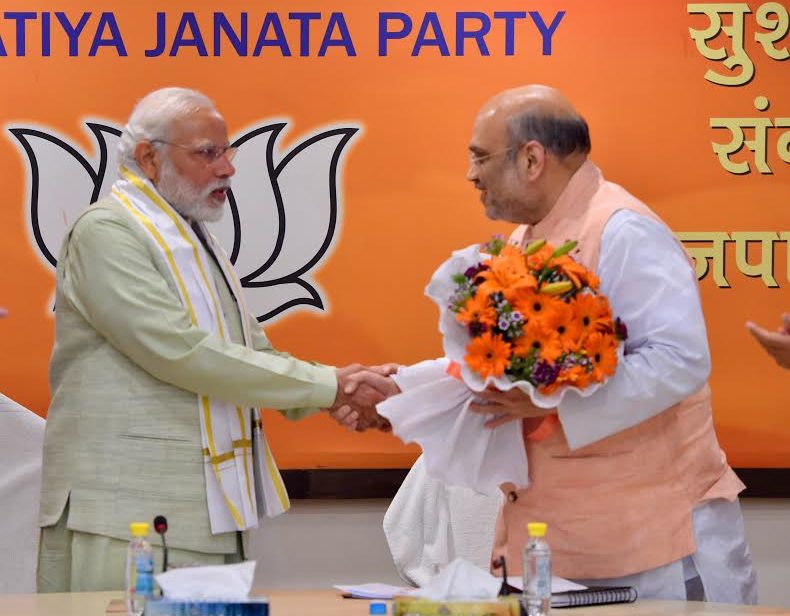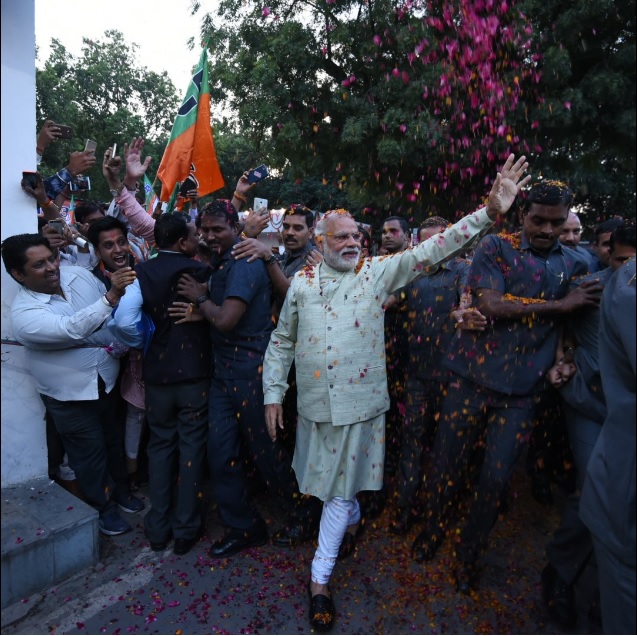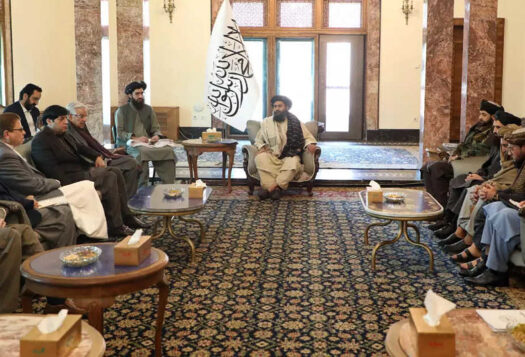
The results of five state assembly elections in India came out over the weekend. The Bharatiya Janata Party (BJP) emerged victorious in India’s biggest state assembly of Uttar Pradesh (UP) as well as in Uttarakhand while the Indian National Congress’ minor consolation was regaining Punjab after a decade. With neither the Congress nor the BJP having managed to muster a majority in Manipur and Goa, the BJP is all set to form a government in these states with the help of independents. With these victories, it is worth noting that 2/3rd of India’s population now lives in BJP-ruled states. From the results of these five assemblies, two conclusions can safely be drawn: voters have voted for change, and Modi’s appeal is intact.
Both the Congress and BJP have registered impressive victories in Punjab and Uttarakhand respectively with the BJP’s sweeping victory in UP being most spectacular. At the end of counting, the BJP+ stands tall having secured an impressive 325 of 403 seats. The magnitude of its win can be gauged when one compares its seats with the 47 of the ruling Samajwadi Party (SP) while the Congress suffered the ignominy of securing just 7 seats, an all-time low. Apart from the phenomenal victory margin that the BJP has recorded, what adds meaning to this mandate is the fact that UP is the country’s most populous state with almost 200 million inhabitants, and sends 80 Members of Parliament to the Lower House, more than any other state in India.
BJP National President Amit Shah’s decision to contest the elections in Modi’s name without having named a chief ministerial candidate in UP was perhaps the most astute and strategically sound decision of the election season. The September 2016 cross-border “surgical strikes” created such an aura around the prime minister that a decision as bold as demonetization only enlarged his larger-than-life image. Modi is seen as a doer, a dream merchant. One may like or dislike the BJP or its so-called ‘Hindutva’ brand of politics, but even Modi’s worst detractors agree that he is working towards a mission to accomplish the dream of a ‘New India’ and sincerely so.
The election mandate has proved that more than an economic move, demonetization was a political decision, which the voters have duly accepted. Courageously sticking to his decision of the note-ban that had been made a referendum by the opposition in these elections, Modi managed to carve out a constituency of the poor and have-nots, much to the chagrin of Bahujan Samaj Party(BSP) supremo Mayawati and her Dalit brand of politics. Demonetization was clearly the masterstroke by which Modi weaned the poorer sections of Other Backward Castes (OBCs) and Dalits away from the BSP and into BJP’s fold. Having consolidated the gains of the 2014 general elections, the BJP is arguably poised to have a triumphant run in the general elections of 2019.

With even the most optimist BJP supporters not having imagined such a landslide victory, the UP election verdict promises a reform, maybe even an upheaval. The BJP is likely to record impressive gains in its Rajya Sabha (Upper House) membership, taking its tally from 56 to possibly 67 seats, though still short of a majority in the House.[1] This will give the BJP an institutional leverage wherein it could get crucial legislations like the Goods and Services Tax (GST) passed in both Houses. Moreover, the BJP now also stands to get its presidential nominee elected to office.
The larger narrative of the BJP’s victory in the UP assembly elections lies in its ability to have perfected its social engineering after a gap of 26 years (since the Ram temple movement, 1991).[2] Modi was able to create a connect with even those socially and economically marginalized sections of the society that were hitherto supporting the BSP rather mechanically. Modi also fully exploited the anguish of non-Yadav OBCs who had been finding themselves left behind in the SP’s selective development agenda.What added to the BJP’s thumping victory is perhaps the near unanimous voting of the 22 percent that makes up UP’s upper caste voters (who had been voting either for the BSP or the SP for want of an alternative in the last two assembly elections).
The BJP’s victory becomes even more important for this has been achieved without any incident of communal polarization of the kind seen post-Muzaffarnagar or without having raked up the Ram temple issue. It needs to be emphasized that in this election, the BJP has succeeded in attracting votes even from the Muslim community, especially women, despite not having fielded a single candidate from the Muslim community. In this grand victory, the BJP now has a chance to show magnanimity and further its terms with the state’s Muslim population without resorting to appeasement. After all, a national party cannot ignore a sizeable minority community for too long. Perhaps, this is the hidden message for the BJP after its landslide victory in the Hindi heartland of Uttar Pradesh.
[1] This analysis is based upon the latest showing of various political parties in the recent round of assembly polls. With 1/3rd members of the Rajya Sabha retiring every two years, and vacancies being filled by respective state assemblies, this is a likely outcome.
[2] The BJP has been considered an urban party largely supported by brahmin and bania (trading community) upper caste voters. During the 1991 Ram Temple Movement, the BJP under L K Advani’s leadership was able to broaden its support base to include OBCs and Dalits as well. At that time, religion was the factor cementing the coming together of these castes (See more here and here). After 26 years, Modi has been able to attain a similar social engineering feat but through the plank of development and pro-poor schemes without arousing emotive issues pertaining to religion.
***
To read more analysis on India’s recent state elections, click here.
Image 1: Bharatiya Janata Party website
Image 2: Twitter, Narendra Modi


